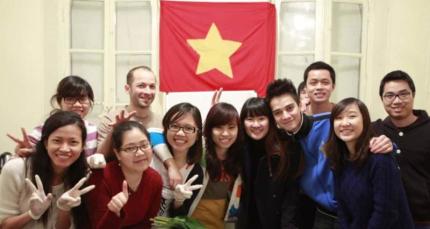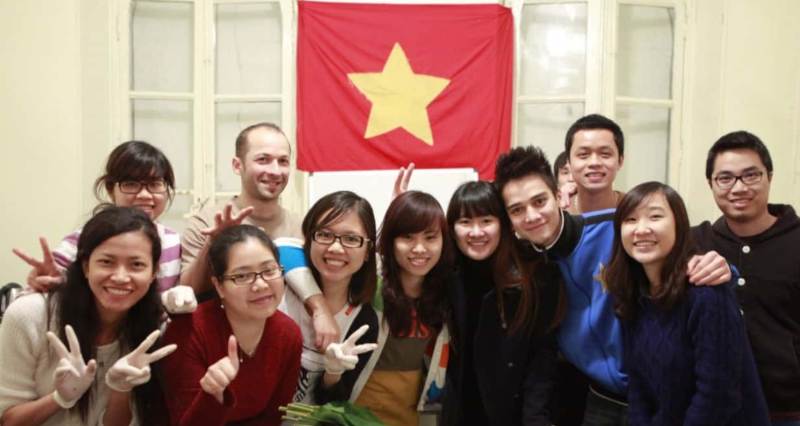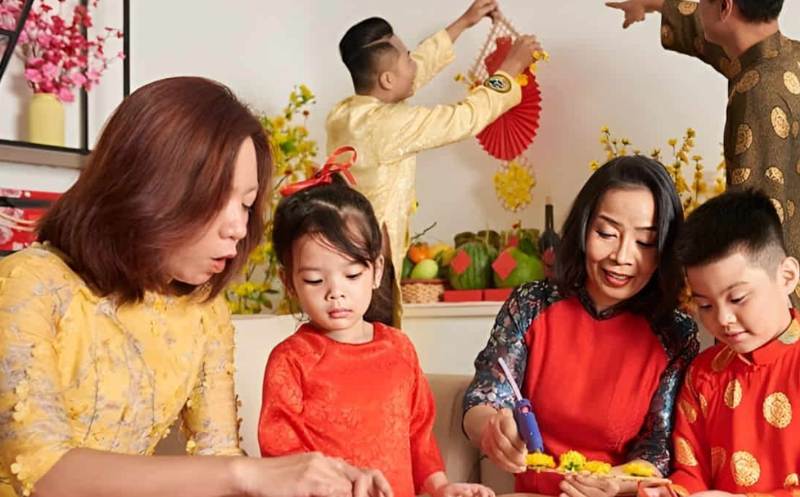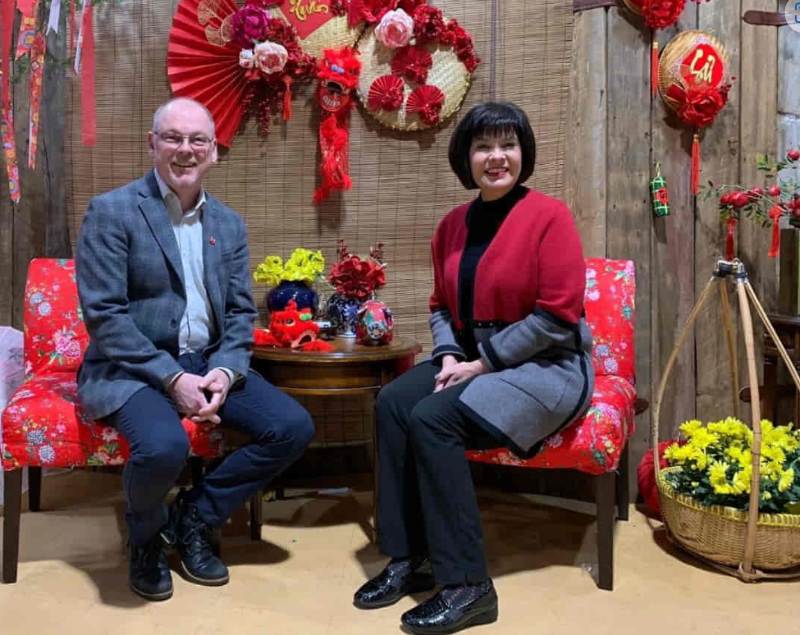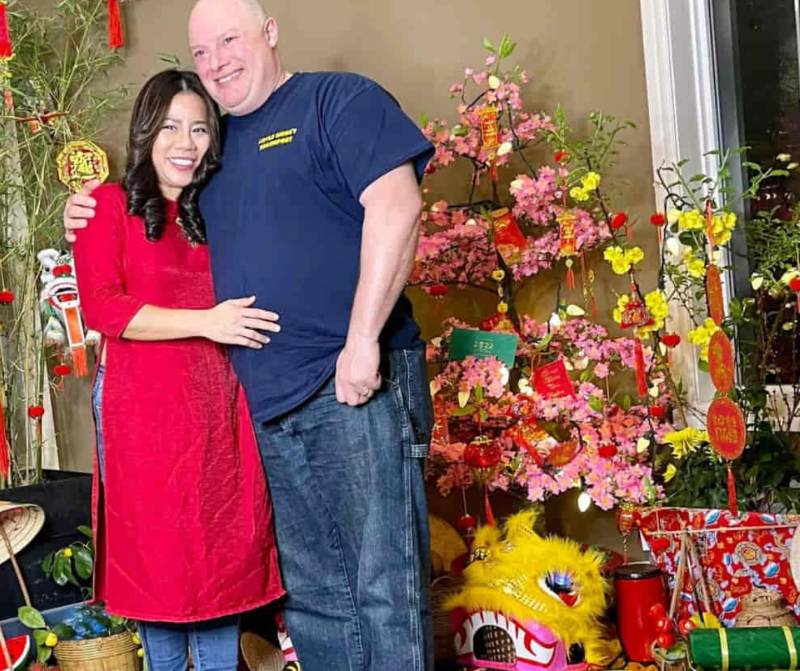Get free consultation
Fill out the form and we will contact you
Tết Nguyên Đán is an important traditional holiday in many Asian countries, including Vietnam. It is a time for families to reunite and exchange well wishes for a peaceful and prosperous new year. However, for the Vietnamese community in Canada - a country far away with differences in climate, culture, and customs - celebrating Tết comes with certain challenges. So how do Vietnamese people in Canada prepare for and celebrate Tết Nguyên Đán? Let’s explore this with Quốc Tịch Thứ Hai in the article below..
This is a common question for many Vietnamese people who plan to study, work, or immigrate to Canada. The answer is yes, Tết Nguyên Đán is still celebrated in Canada, but only in certain areas.
As a traditional festival of the Chinese and other East Asian communities, Tết Nguyên Đán is celebrated on the first day of the lunar new year. According to 2016 data, there are about 240,615 people of Vietnamese origin living in Canada, making up 0.7% of the country's population.
The Vietnamese community is primarily concentrated in major cities like Toronto, Vancouver, Montreal, and Calgary. As a result, Tết Nguyên Đán celebrations here are usually vibrant and grand, featuring activities like dragon-lion dances, fairs, cultural performances, fireworks, and the giving of lucky money.
However, in more remote areas or places with fewer Asian residents, Tết Nguyên Đán is not celebrated on a large scale. The Vietnamese people here typically organize small family or community gatherings to welcome the New Year, wishing for health and happiness in the year ahead.
Despite being far from home, they still maintain familiar customs such as decorating their homes with apricot blossoms, peach flowers, kumquat trees, preparing bánh chưng, bánh tét, fruit trays, and offering incense to their ancestors. No matter where they are, Tết Nguyên Đán remains a special occasion for Vietnamese people to honor their parents and grandparents, and to preserve family bonds.
Vietnamese people in Canada usually start preparing for Tết a few weeks in advance, cleaning their homes, decorating with lanterns, apricot blossoms, peach flowers, kumquat trees, and setting up ancestor altars. They also purchase essential items for Tết, such as bánh chưng, bánh tét, candied fruits, sweets, tea, alcohol, and many other foods. To create a warm Tết atmosphere, many families also make their own bánh chưng and bánh tét at home.
During the Tết holidays, Vietnamese people in Canada often wake up early to perform the New Year's Eve ritual, wish each other a happy new year, and exchange lucky money with well-wishes for good fortune. They also take time to visit friends, neighbors, and relatives within the community.
Additionally, many people actively participate in cultural activities organized by the Vietnamese community, such as Tết fairs, cultural performances, social gatherings, raffles, and traditional games. Especially, many families also visit temples to pray for peace, offer incense, listen to teachings, and participate in lantern festivals during this time.
Additionally, Vietnamese people in Canada cleverly integrate local Canadian culture into their Tết Nguyên Đán celebrations. They often choose to buy gifts that strongly symbolize Canada, such as maple leaves, teddy bears, soap, maple syrup, and shortbread cookies to give as presents. Moreover, Vietnamese people also participate in popular Canadian recreational activities like skiing, ice skating, hockey, or tennis, creating a unique blend of both cultures.
Not only do they preserve traditions, but the Vietnamese community also expresses their connection with the local population by inviting neighbors from different ethnic backgrounds to join in the Tết celebrations or giving them gifts and New Year's cards.
Although far from their homeland, Vietnamese people in Canada always strive to preserve and spread the beauty of traditional Tết culture. At the same time, they are deeply grateful and proud of Canada, the country that welcomed them and provided opportunities to live, work, and thrive in a free, democratic, and modern society.
One of the major challenges that Vietnamese people in Canada face when celebrating Tết Nguyên Đán is the time difference. Since Canada follows the Gregorian calendar, Tết usually falls on regular working or school days, not a national holiday. This means many people cannot take time off work or school to spend time celebrating Tết with their families and communities.
In addition, Canada's cold climate is also a significant obstacle. With winter lasting from November to April, the time of Tết, usually at the end of January or early February, coincides with heavy snowfall and temperatures that can drop below -20°C.
Decorating homes, shopping, and commuting become much more difficult. Many people have to rely on public transportation like buses or subways to get to work and go grocery shopping, as they either do not have their own cars or prefer not to drive in snowy conditions. They also have to wear multiple layers of warm clothing, making it harder to wear traditional outfits like áo dài.
Another challenge faced by Vietnamese people in Canada when celebrating Tết Nguyên Đán is the scarcity of traditional items associated with the holiday. Because the Vietnamese community in Canada is not as large as in other countries, finding foods, drinks, and gifts like bánh chưng, bánh tét, candied fruits, alcohol, and lucky money can be quite difficult. Many people have to make these items themselves or order them from distant sources to get the authentic Tết flavors.
However, making traditional dishes also brings positive significance. It provides an opportunity for the Vietnamese community to interact, share cooking experiences, and create a cozy Tết atmosphere together. Moreover, the process of preparing these dishes helps strengthen family and community bonds, fostering a deep appreciation for traditions and national culture.
Another challenge faced by the Vietnamese community in Canada is preserving and passing on the meaning of Tết Nguyên Đán to the younger generation. Living in a multicultural environment, many Vietnamese children and young people are easily influenced by Western lifestyles and cultures, leading to a gradual loss of interest and understanding of traditional Tết customs.
To address this, Vietnamese families and organizations in Canada have made efforts to educate and encourage the younger generation to participate in Tết activities such as making bánh chưng, decorating homes, visiting flower markets, watching lion dances, singing ca trù, and playing traditional games like bầu cua, ô ăn quan. These activities not only help the younger generation learn more about Vietnamese culture but also help them feel pride and connection with their roots.
Canadians also celebrate Tết Nguyên Đán around the same time as other Asian countries, on the first day of the lunar calendar. However, due to the time zone differences, Tết's first day in Canada may be earlier or later than in Vietnam.
For example, in 2024, the first day of the lunar New Year in Vietnam falls on February 6 (Gregorian calendar), but in Canada, it will be on February 5 (Gregorian calendar), due to Canada's time zone being 11 to 15 hours ahead of Vietnam. This means that the timing of Tết celebrations in Canada will differ slightly from those in Vietnam.
Canadians celebrate Tết Nguyên Đán in various ways, depending on regional characteristics, culture, and beliefs. Some common activities during this time include:
Canadians, especially in areas with large Asian communities such as Chinatown or Little Saigon, often enjoy participating in street festivals to welcome the Lunar New Year. These festivals feature traditional foods from various Asian countries, such as bánh chưng, bánh tét, spring rolls, pho, and dim sum. In addition, cultural performances like lion dances, dragon dances, folk music, and colorful fireworks are highlights that create a lively and warm atmosphere.
Gift-giving and giving red envelopes (lì xì) are also popular customs in Canada during Tết Nguyên Đán. Gifts are usually items with positive meanings, such as flowers, fruits, chocolates, or wine. Lì xì is given in red envelopes, symbolizing wishes for luck and prosperity in the new year.
During Tết, many Canadians visit temples to pray and seek blessings for the new year. The temples are decorated brightly with lanterns, flowers, and incense, creating a solemn and cozy atmosphere. This is also an opportunity for Canadians to learn about the customs and beliefs of Asian countries, especially Buddhism and Taoism.
Canadians are very open to learning about and respecting the cultures of Asian countries. They often try to learn how to wish a happy new year in different languages like Chinese, Vietnamese, Korean, and follow traditional customs such as avoiding bad luck phrases, refraining from arguments, not wearing black, and not giving unlucky gifts. This reflects their respect and spirit of integration towards the East Asian communities.
All these activities not only enrich Canadians' cultural experiences but also help them connect and celebrate the diversity in their communities.
Thus, Tết Nguyên Đán is not only an opportunity for Canadians to show respect and connect with East Asian cultures but also a time to share joy and hope for the new year. Activities like participating in street festivals, giving gifts and red envelopes, visiting temples, and learning about and respecting traditions create a warm and united atmosphere in the community. Tết Nguyên Đán has become an important occasion for people, regardless of cultural background, to come together to celebrate and welcome the new year filled with dreams and aspirations.
Fill out the form and we will contact you
